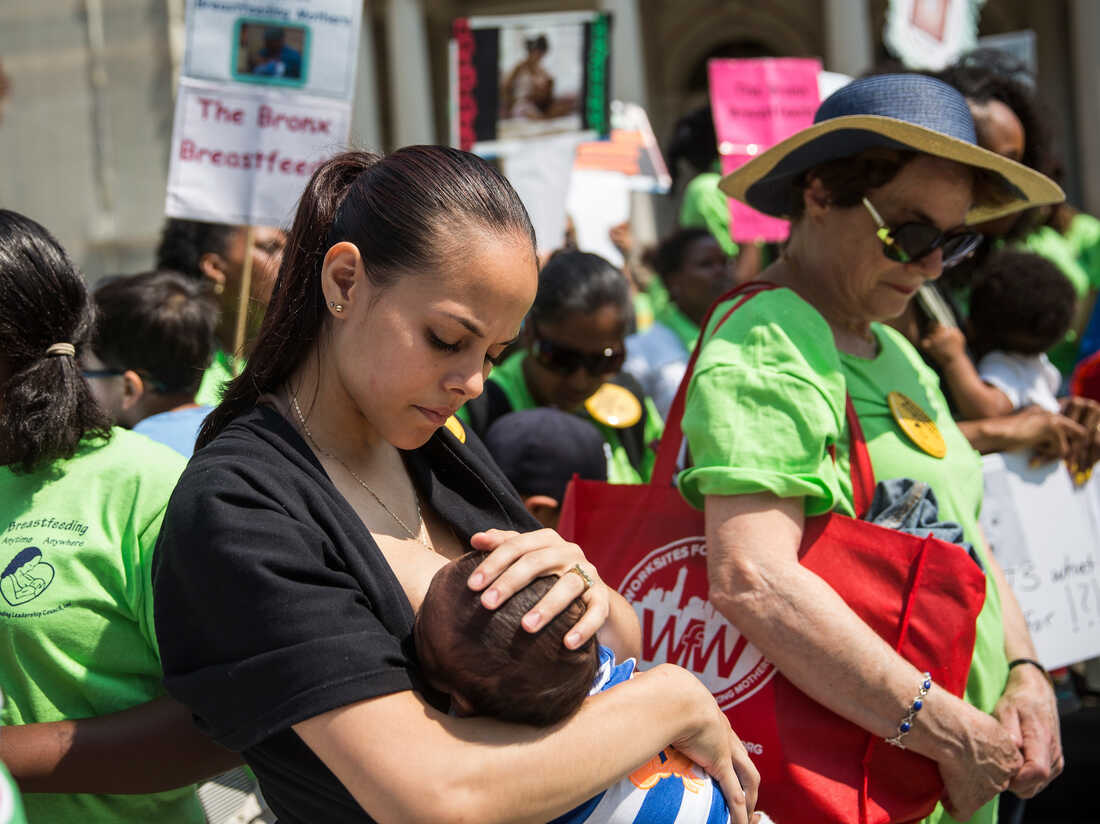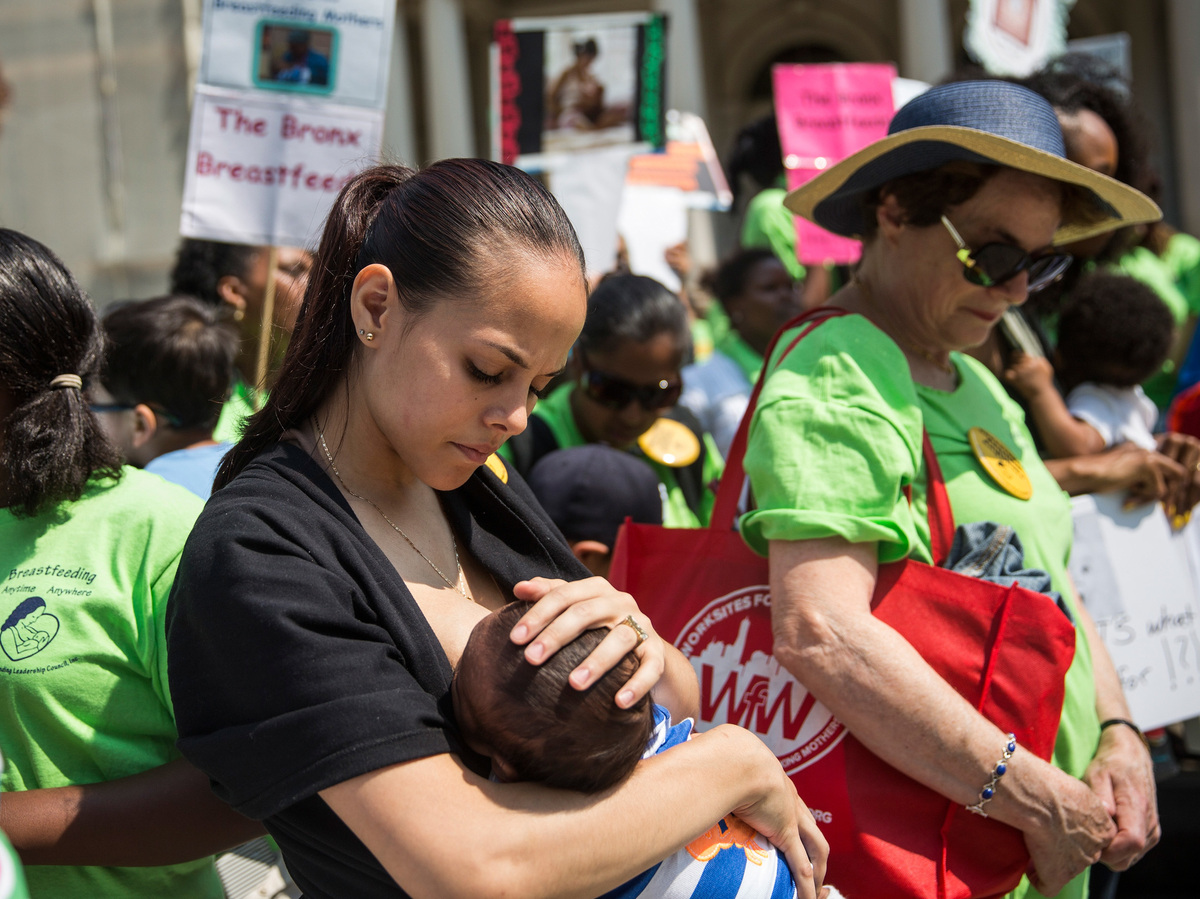The baby formula shortage is prompting calls to increase support for breastfeeding : NPR
[ad_1]

The toddler-formulation lack has led some to problem why the U.S. isn’t going to present a lot more aid for breastfeeding. Here, a female breastfeeds her son outdoors New York City Corridor throughout a 2014 rally to support breastfeeding in general public.
Andrew Burton/Getty Pictures
disguise caption
toggle caption
Andrew Burton/Getty Visuals

The toddler-formulation shortage has led some to question why the U.S. won’t present much more help for breastfeeding. In this article, a girl breastfeeds her son outside the house New York Town Hall in the course of a 2014 rally to aid breastfeeding in public.
Andrew Burton/Getty Photographs
Mom and dad are scrambling to come across child formulation. Factories are operating around the clock to make a lot more. And army cargo planes are airlifting formula from abroad.
Often neglected, even though, in the race to fill the hole still left when a big formulation manufacturing facility closed due to suspected contamination is the most purely natural choice: mother’s milk.
“If we did additional to support breastfeeding, we wouldn’t be in this mess,” suggests Dr. Melissa Bartick, an assistant professor at Harvard Professional medical School.
The American Academy of Pediatrics endorses that most toddlers be fed exclusively with breast milk for the very first six months. But in 2018, only about one in four babies born in the U.S. fulfilled that focus on.
There are a variety of motives family members convert to supplemental method or end nursing entirely. But Bartick suggests intense marketing and advertising by components makers is partly to blame.
“The method makers would just give tons and tons of cost-free method to the clinic to try to offer their model and have the hospitals send the mothers home with present luggage total of system, so if they run into any challenge at house they just pop in a ready-to-feed bottle in the baby, and that begins the mother turning into dependent on components,” Bartick says.
Some hospitals now limit components giveaways in an hard work to motivate breastfeeding. But the $55 billion formulation business finds inventive workarounds, in the U.S. and abroad.
“Frankly, they have way, way a lot more income than us,” says Bartick, who has held management posts in the American General public Health Affiliation and the U.S. Breastfeeding Committee. “And we won’t be able to fight that.”
Bartick started studying and advertising and marketing the health and fitness added benefits of breastfeeding following she gave start and ran into roadblocks at the clinic whilst trying to nurse her boy or girl far more than two decades in the past.
“I assumed it would be kind of a maternity leave job, but in this article I am, 23 a long time later, nonetheless doing the job on it,” she suggests with a rueful snicker.
50 percent the formula bought in the U.S. is paid for by the federal governing administration to guidance minimal-money families although the Agriculture Department’s Exclusive Supplemental Nourishment System for Girls, Infants and Young children. Toddlers that get that sponsored components through the WIC program are significantly less probably to at any time breastfeed than all those who you should not.
In addition, the U.S. government has fought for a long time from limits on overseas components internet marketing. When the Globe Well being Business adopted a non-binding code of conduct to limit components marketing in 1981, the United States cast the lone vote against it.
This year’s lack has forged a harsh new spotlight on the components field, although. The Federal Trade Fee has introduced an inquiry into how a handful of companies came to dominate the marketplace. And Agriculture Secretary Tom Vilsack, who oversees the WIC program, acknowledged the want for a far more strong offer chain.
“The problem for people of us in federal government is to figure out methods we can understand from this working experience,” Vilsack advised reporters final week, as he greeted an Air Power C-17 carrying 78,000 kilos of system rushed in from Switzerland.
“We’re not as resilient as we should be,” he included.
Breastfeeding advocates say the most effective way to develop resilience is obvious.
“The breast is the shortest provide chain,” says Kadee Russ, an economist at the University of California, Davis.
Russ is swift to acknowledge that not every parent can breastfeed, or needs to. But although 84% of new mothers begin breastfeeding, six in 10 end before than they’d like. Russ details to a range of components, like far too tiny teaching from wellness treatment suppliers, far too couple of pumping options at get the job done, and too minimal paid family members leave.
“It is a minor bit demoralizing when you have a toddler and you’re conversing to your friends in these other nations and they are heading to have a 12 months of depart to nurse their youngsters and you do not,” Russ suggests. “It truly is not uncomplicated to breastfeed. Moms need to have guidance. It really is not an straightforward process. It truly is perform.”
Dr. Bartick argues that boosting breastfeeding costs would deliver significant overall health treatment financial savings, due to the fact nursing toddlers undergo much less from ear infections, diarrhea, weight problems and other ailments.
But Russ notes that building the financial case for breastfeeding needs a much more inclusive variety of accounting.
“If you get method, that goes into GDP as a transaction,” she states. “Breastfeeding isn’t really [included]. And in simple fact, what may possibly display up in nationwide economic figures is that you may well be functioning a lot less.”
Russ states it really is brief-sighted to count the financial charge of expanding paid depart, for instance, without having taking into consideration the offsetting advantages of increased access to breastfeeding.
“I imagine that it is important to understand that breast milk is part of meals systems,” Russ states. “It is a offer chain in itself.”
Boosting breastfeeding costs would not fix the rapid formulation scarcity. But the memory of empty retail store cabinets may well prompt some family members to consider a second appear at formula’s authentic opposition.
[ad_2]
Source website link








